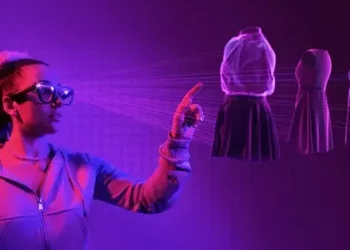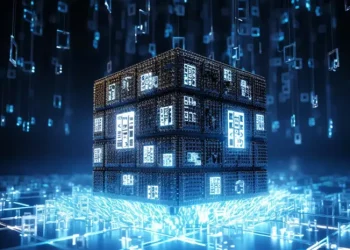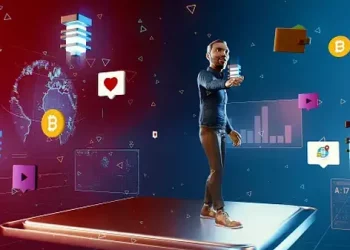The term “metaverse” has become a buzzword in recent years, capturing the imaginations of tech enthusiasts, investors, and everyday people alike. As the digital world evolves, the concept of the metaverse represents a significant shift in how we interact with technology, each other, and even reality itself. But what exactly is the metaverse? This article provides a simple yet comprehensive definition of the metaverse, breaking down its key components, potential impact, and what it means for the future of the digital landscape.
Defining the Metaverse: A New Digital Universe
A Virtual World Beyond Our Reality
The metaverse is a collective virtual shared space that blends physical and digital realities. It is an expansive network of interconnected virtual environments where users can interact with each other, digital objects, and computer-generated environments in real time. Imagine it as a digital universe parallel to our physical world, where anything that can be imagined can also be experienced.
Unlike traditional online platforms, which are often limited by specific applications or services, the metaverse offers a seamless, immersive experience that allows users to move between different virtual environments without restrictions. Whether it’s attending a virtual concert, exploring a digital city, or participating in a work meeting from a virtual office, the metaverse aims to bring the limitless possibilities of the digital world to life.
Persistent and Shared Environments
One of the defining features of the metaverse is its persistence. Unlike video games or social networks, which operate within isolated and temporary environments, the metaverse is a continuous, shared space that exists regardless of whether any particular individual is online. This means that the actions and interactions that occur in the metaverse have lasting consequences, creating a sense of permanence similar to the physical world.
For example, if you build a virtual home in the metaverse, it remains there even when you log off, and others can visit it or interact with it while you are away. This persistent nature of the metaverse contributes to its sense of reality, making it more than just a fleeting digital experience.
A Fusion of Technologies
The metaverse is not a single technology or platform but rather a convergence of various technologies that come together to create a cohesive digital ecosystem. Some of the key technologies driving the development of the metaverse include:
Virtual Reality (VR): VR provides immersive experiences that allow users to enter and interact with fully digital environments. By wearing VR headsets, users can experience the metaverse as if they were physically present within it.
Augmented Reality (AR): AR overlays digital information onto the physical world, enhancing the user’s perception of reality. In the metaverse, AR can be used to blend the digital and physical worlds, creating hybrid experiences that are both immersive and interactive.
Blockchain and Decentralization: Blockchain technology plays a crucial role in the metaverse by enabling decentralized ownership of digital assets and ensuring security, transparency, and interoperability across different virtual environments. Blockchain allows users to own, trade, and monetize digital items within the metaverse, such as virtual real estate, clothing, or artwork.
Artificial Intelligence (AI): AI powers the intelligent systems and virtual beings within the metaverse, from AI-driven avatars to predictive algorithms that enhance user experiences. AI helps create dynamic, responsive environments that adapt to user preferences and behaviors.
5G and High-Speed Connectivity: The metaverse relies on fast, reliable internet connections to support real-time interactions and high-quality visuals. The rollout of 5G networks is essential for enabling the seamless, lag-free experiences that users expect in the metaverse.
How the Metaverse Is Shaping the Future
A New Frontier for Social Interaction
The metaverse has the potential to revolutionize the way we interact with each other. In the metaverse, social interactions go beyond text, voice, or video communication; they become immersive experiences where users can share spaces, activities, and experiences in real time. Whether it’s hanging out with friends in a virtual café, attending a virtual wedding, or collaborating on a project in a virtual workspace, the metaverse brings a new level of engagement and presence to social interactions.
These social interactions are not limited by geographic boundaries, allowing people from around the world to connect in ways that were previously impossible. The metaverse could become the ultimate global social network, where cultural exchange and collaboration are fostered on an unprecedented scale.
The Future of Work and Education
The metaverse is poised to transform the way we work and learn. Virtual offices and classrooms within the metaverse offer a more immersive and interactive alternative to traditional remote work and online education. Employees can collaborate in virtual environments that replicate the experience of being in the same room, while students can participate in hands-on learning experiences that are not possible in the physical world.
For example, a biology class could explore a digital recreation of a rainforest, observing wildlife and ecosystems in a way that textbooks or videos cannot replicate. Similarly, a team of engineers could design and test a prototype in a virtual lab, manipulating digital models with the same precision as physical ones.
The metaverse also allows for the creation of new job opportunities and industries. From virtual real estate agents to digital fashion designers, the metaverse opens up a world of possibilities for those looking to build careers in this emerging digital space.
A Digital Economy Driven by Creativity
The metaverse is not just a place for entertainment or socialization; it is also a thriving digital economy where users can create, buy, sell, and trade digital assets. This economy is powered by blockchain technology, which ensures that digital items within the metaverse are unique, verifiable, and transferable.
Users can create and monetize their own content within the metaverse, from virtual homes and clothing to artwork and music. This creative economy allows individuals to express themselves in new ways while also generating income. The rise of non-fungible tokens (NFTs) has further fueled this digital economy, enabling the sale of unique digital items that have real value.
In the metaverse, creativity is the currency of the future, and those who can imagine and build new digital experiences will be at the forefront of this burgeoning economy.
Entertainment and Gaming Redefined
The metaverse is set to redefine entertainment and gaming by offering more immersive and interactive experiences. Traditional video games are often limited by predefined rules and objectives, but the metaverse offers open-ended possibilities where users can create their own experiences and stories.
In the metaverse, games can be more than just a form of entertainment; they can be entire worlds where users live, work, and play. These virtual worlds can be continually updated and expanded, creating a dynamic environment where the lines between game and reality are blurred.
Beyond gaming, the metaverse also offers new forms of entertainment, such as virtual concerts, theater performances, and art exhibitions. These events can be attended by millions of people from around the world, creating shared cultural experiences that transcend physical boundaries.
Challenges and Ethical Considerations
While the metaverse offers exciting possibilities, it also presents challenges and ethical considerations that must be addressed. Privacy, security, and digital ownership are key concerns in a world where personal data and digital assets are increasingly valuable.
In the metaverse, users must trust that their digital identities, assets, and interactions are secure and protected. This requires robust cybersecurity measures, transparent governance, and clear regulations to ensure that users’ rights are upheld.
Additionally, the metaverse raises questions about the impact of digital experiences on mental health, social dynamics, and the environment. As the metaverse becomes more integrated into our daily lives, it is important to consider how it affects our well-being and how we can create a digital world that is inclusive, equitable, and sustainable.
See also: Why Does Facebook Want a Metaverse?
Conclusion: The Metaverse as a New Reality
The metaverse is more than just a concept or a technological trend; it represents a fundamental shift in how we interact with the digital world and each other. At its core, the metaverse is a collective virtual shared space that blends physical and digital realities, offering endless possibilities for social interaction, work, education, entertainment, and commerce.
As we move closer to realizing the full potential of the metaverse, it is essential to understand its implications and prepare for the opportunities and challenges it presents. The metaverse is not just the future of the internet; it is the future of human experience, where the boundaries between the real and the virtual are increasingly blurred.
For those looking to explore the metaverse, it is important to approach it with curiosity, creativity, and a critical eye. The metaverse is a blank canvas, waiting to be filled with the ideas, innovations, and experiences of those who dare to imagine a new reality. As we step into this new digital universe, the question is not just what the metaverse is, but what it can become.
Related topics:

















